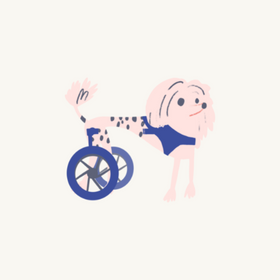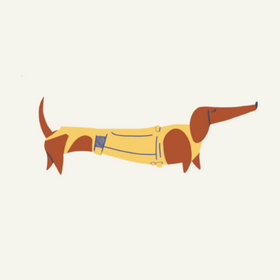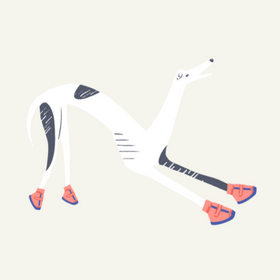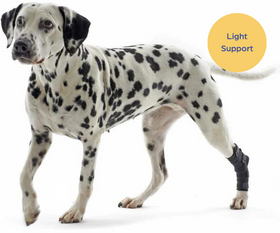01730 622544

Does Conservative Management for Dog ACL injuries Work?
We have so many customers asking us about our dog cruciate brace and how effective it will be for their dog after injury. Here is some information from Dr James St Clair Top Dog Health It will help you understand the degrees of injury your dog may have suffered and whether surgery is the best option or not
By: Dr. James St.Clair, Director of Veterinary Medicine, TopDog Health and Rehabilitation.
This seems to be a very common question. Oh how times have changed. It used to be that we just accepted exactly what our doctor told us. Who were we to say? They are the experts. If they said my dog needs surgery then I guess my dog needs surgery.
This is not the case in today's world. Lets face it, your doctor is still saying the same thing, but by the time you get in the car after the appointment you have already gone online and read multiple stories about how other peoples dogs recovered totally fine without surgery. By this point you are totally confused.
So here's the honest to god truth. When it comes to ACL injuries in dogs there is incredible VARIABILITY. There is variability in how veterinarians diagnose the injury but more important there is HUGE variability in the degree of injury.
For example, just to list a few:
-
Your dog could have a partial tear
- That partial tear could be ¼ tear
- That partial tear could be ½ tear
- That partial tear could be ¾ tear
- That partial tear could also involve a meniscus tear
- The list goes on!
-
Your dog could have a full tear
- That could be just a full ACL tear
- That could be a full ACL tear with a secondary meniscus tear
You get the point.
The only reason why I bring this up is that you have to be very very very very careful when you are reading information online. The pet owner posting the information may think or heard that they're dog had and ACL tear, and then the dog does awesome with conservative management and they have to tell the world.
The reality is that you need to be crystal clear on exactly how bad your dog's injury is. Then and only then can you start to explore alternative options.
An Analogy: Picture in your mind your dogs ACL ligament as a big cable that holds two poles together. Lets say that cable is made up of 100 smaller cables.
If you where to break 25 of the 100 smaller cables, then obviously you would still have 75 small cables holding the two poles together. This is still very strong. This is the concept of a partial tear. Now if you were to do conservative management at this point, lets say some anti-inflammatory and rest or 6 weeks then eventually some scar tissue would form outside of the joint and the inflammation would go away and guess what you dog would be fixed (i.e. Not limping anymore).
Now if we were to break 75 of the 100 small cables, then yes the two poles would still be held together but they would be very unstable. The unfortunate reality is that eventually no matter what you did, the remaining 25 small cables would also break and then disastera full tear.
The Reality: The reality is simply this. An ACL tear in a dog is a structural problem. Case and point! Have you ever seen a person with an ACL tear wearing a knee brace? The purpose of that brace is to keep the knee straight so that it does not bend. The reason for this is that once the knees bend, because of the structural instability there is pain.
Dogs on the other hand do not have this luxury. Dogs naturally walk with their knees bend at a slight angle. Therefore when a dog puts weight on their leginstantly they feel the instability and therefore pain.
Case and Point: Yes, conservative management works for some dogs. The reality is that it entirely depends on the degree of the ACL injury. The vast majority of dogs need to have the knee stabilized and therefore surgery.
Whatever you do, be careful what you read online.
Lastly. if you choose conservative management be sure to be very very careful. The reason is if your dog is not restricted it can be at grave risk of compromising or injuring the opposite hind leg ACL. If this were to happen it could be devastating to both you and your dog. You need to also keep a realistic time frame in mind. If your dog is not make significant improvements within a 4 week period of time then it is time to give your veterinarian a call and discuss other options to simple conservative management.

Looking for help with your dog?
We can help find the right solution for your dog
Feel free to give us a call on 01730 622544
or email us at woof@zoomadog.co.uk





